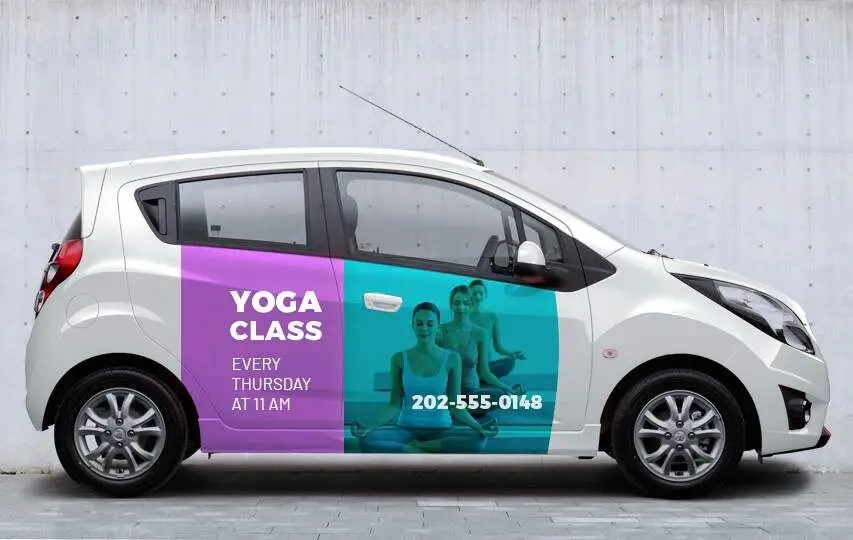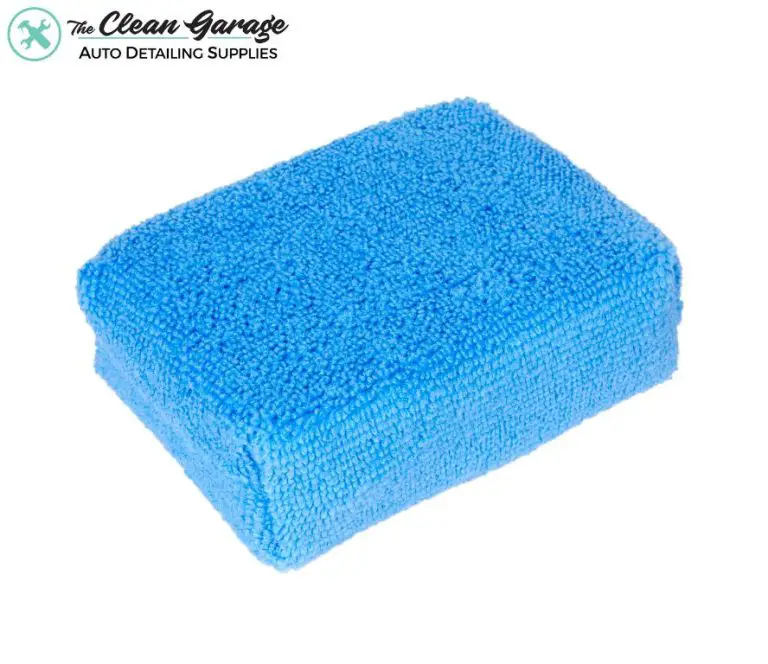What Is A Decal In Design?
What Are Decals?
Decals are graphic designs that can be removed and applied to surfaces. [1] The word decal comes from the French word “décalcomanie”, which means the process of transferring pictures and designs to surfaces. Decals have a long history, with the earliest decals being made in the early 1900s using lithography to produce the graphics. [2]
Decals can be made from paper, plastic, or other materials. They usually have an adhesive backing, allowing them to stick to surfaces. To make decals, the graphic design is printed onto a material, often using a lithographic or digital printing process. A release layer is applied over the design, and then the decal is coated with a glue or adhesive.
When applied, the adhesive sticks the decal to the desired surface. The top layer can then be peeled away, leaving the graphic adhered to the surface below. This allows the decal design to be conveniently transported and applied. [3]
Types of Decals
Decals come in a variety of materials, with some of the most common being vinyl, plastic, paper, and etched glass.
Vinyl is one of the most popular decal materials due to its versatility and durability. Vinyl decals come in two main types: permanent and removable. Permanent vinyl decals use a strong adhesive that adheres the decal securely to the surface. Removable vinyl uses a less aggressive adhesive, allowing the decal to be repositioned or removed without damaging the surface underneath. Vinyl is commonly used for car decals, wall murals, floor graphics, and product packaging.
Plastic decals are often made from polycarbonate or polystyrene materials. They have a rigid construction that allows them to hold their shape. Plastic decals are frequently used for model making, badges, and small product labels. Their crisp details and high durability make them ideal for these types of applications.
Paper decals provide full color printing capabilities in a lightweight, inexpensive material. Since paper has an absorbent quality, paper decals are usually coated in a protective laminate to improve durability. Common uses include event signage, promotional stickers, and temporary product branding.
Etched glass decals create a frosted effect by chemically etching the design into the glass surface. The etching diffuses light as it passes through, rendering the design translucent. Etched glass decals are often used decoratively for windows, mirrors, and tabletops.
Using Decals in Interior Design
Decals can be a fun and cost-effective way to transform the look of a room. When using decals in interior design, it’s essential to consider the color scheme, scale, and placement to ensure a harmonious integration with the existing decor. Decals work especially well on walls, floors, and furniture.

On walls, decals can be used to add an accent wall, highlight architectural details, or create a full wall mural. They come in all sizes, from small motifs to large murals covering entire walls. Geometric shapes, floral designs, landscapes, and abstract patterns are popular wall decal themes. Strategically placed decals can draw the eye to focus on a particular area (https://www.lotpixel.com/blog/using-decals-in-interior-design).
Decals can also be used effectively on floors, especially vinyl decals. Footprint trails leading to a child’s room, bold stripes or shapes to define a space, and decal rugs are creative ways to decorate floors without a permanent change. The possibilities are endless.
On furniture, decals can give new life to outdated pieces. Decoupage decals layered on dressers, desks, and tables create a custom look. Decals around the border of a mirror, on the legs of a chair, or the face of cabinet doors also work well. Just a few strategic decals can transform the whole feel of a room.
With careful planning, decals allow you to add major design impact and customize any space. Their removable, non-permanent nature provides flexibility to change up looks over time. Decals are an easy, affordable DIY route to inject personality and style into any interior.
Using Decals on Products
Decals are a popular way for companies to brand and customize products. From mugs to electronics to skateboards, decals allow products to stand out while displaying a brand’s logo or unique designs.
Mugs and drinkware commonly feature decals. A logo, funny phrase, or graphic image printed on a decal can personalize a plain mug. Decals with full-color designs or photos are eye-catching on drinkware. Water bottles, tumblers, and thermoses also lend themselves well to decals for individual customization or corporate branding.
Electronics like laptops and game consoles often have decals applied to them. Manufacturers will use decals to display logos, capacity info, or decorative graphics on devices. Some decals even serve functional purposes like indicating buttons or ports. Additionally, end users can buy decals to personalize their electronics with colorful skins or skins that feature favorite characters or sports teams.
The underside of skateboards is a popular placement for decals called griptape. Griptape decals come in colorful designs and cool graphics. They allow skaters to show off their personal style and flair. The grip aspect also enables better traction and control of the board during tricks.
Almost any consumer product you can imagine can feature decals for branding, personalization, or serving a functional purpose. Decals allow for instant customization without permanently altering the product. For brands, it provides a movable advertising space. And for users, it enables self-expression.
Decals for Vehicles
Vehicle decals allow car owners to customize and personalize their vehicles. Decals come in a wide variety of designs, colors, and materials to match individual styles. Creative decals let people showcase their personality through their car’s exterior.
There are certain rules and restrictions for vehicle decals. Many states prohibit window decals from obstructing the driver’s view. Decals cannot cover license plates or any legally required graphics. Most customized decals are applied to the rear windshield, side windows, hood, or body panels. Carefully selecting locations allows drivers to stay street legal.
Some popular creative uses of vehicle decals include:
- Decorative stripes down the sides
- Stylized text or logos on rear windshields
- Custom illustrations covering hoods or doors
- Vintage-inspired pinstriping details
Bold graphic decals and eye-catching colors transform dull metal exteriors. Geometric shapes and patterns make vehicles stand out in a crowd. Businesses rely on decals for branding company cars or commercial fleets. Overall, decals provide an easy and affordable way to customize any vehicle.
Sources:
https://vinyllabs.co/the-latest-trends-in-vehicle-wrap-designs/
https://signwarehouse.com/blogs/content/new-trends-in-vinyl-vehicle-graphics
Decals in Fashion
Decals have become an integral part of fashion design over the past several decades. Clothing, shoes, and accessories featuring decals really emerged in the 1970s and 1980s as part of streetwear and youth culture. Skateboarders and graffiti artists would decorate their clothing, boards, and accessories with stickers and decals representing their favorite brands or personal artwork.
According to StickerYou 101: Stickers Through The Ages, fashion brands like Chanel began using fabric decals on their designer handbags in the 1980s. The mix of high fashion and street style kickstarted the trend of decals on clothing and accessories.
Today, decals can be found on all types of apparel including t-shirts, sweatshirts, jeans, hats, and more. Shoe brands like Vans are known for their signature checkered decals. Fashion designers might use custom decals made from unique materials to elevate basic garments. Personalized name, initial and number decals are also popular for individual flair.
Decals allow for creative, artistic expression and branding. They have firmly solidified their place in the world of fashion. From high-end couture to casual streetwear, decals are used across cultures and styles to make bold statements.
Decal Trends
Decal designs have followed wider graphic design trends in recent years. Some popular decal styles have included:
Minimalist decals with simple shapes and limited color palettes have remained on-trend. These allow the decal to seamlessly integrate into a wider design scheme. Minimalist designs continue to gain popularity across visual media.
Maximalist decals take the opposite approach, featuring complex designs, vivid colors, and bold shapes. These eye-catching decals make a statement. Maximalist sticker designs have become fashionable for those seeking vibrant and dynamic visuals.
Monochromatic decals use shades of a single color. This allows the decal to complement the surrounding colors. Monochromatic palettes remain a staple of contemporary graphic design.
Geometric decals rely on mathematical shapes like circles, triangles, and squares arranged in precise patterns. The structured style provides visual interest. Geometric motifs have been widely incorporated into graphics and products.
By aligning decal designs with wider aesthetic trends, designers ensure their decals stay current and relevant.
Notable Designers Using Decals
Decals have become an integral part of many designers’ creative processes and final products. Here are some notable designers who have incorporated decals in innovative ways:
Denal is a designer known for creating unique custom decals for vehicles, helmets, and other surfaces. As described on the Custom Decal Images forum, “Denal is one of the top decal designers here one day. That day seems not so distant, I must add.” Denal’s decals feature colorful abstract designs and shapes that make a bold visual statement.
Other leading decal designers like John Doe use decals to add personality and visual interest to everyday products and apparel. Doe’s decal brand “Sticker Happy” creates whimsical decals for water bottles, laptops, shoes, and more. The decals feature Doe’s signature playful illustrations and funny phrases.
Fashion designer Jane Smith has also embraced the decal trend. She uses large custom floral decals on dresses and jackets to create romantic, feminine styles. The decals allow Smith to add intricate designs that would be difficult to incorporate through traditional embroidery or fabric printing techniques.
As these examples show, decals give designers a versatile medium to apply their creativity. From adding flair to cars to bringing apparel and products to life, notable designers are embracing decals in innovative ways.
Decal Materials and Production
Decals can be made from various materials, with the most common being vinyl, mylar, paper, and ceramic. The material used depends on the intended application and desired durability of the decal.
Vinyl is a popular material for decals thanks to its flexibility and durability. Vinyl decals are cut from large vinyl sheets using computer-controlled plotters. The vinyl is backed with an adhesive layer and application tape to make it easy to apply the decal during installation. Vinyl is suitable for both indoor and outdoor applications. It can last 5-10 years outdoors and even longer indoors (source).
Mylar is a thin, flexible polyester film suitable for decals needing high temperature and solvent resistance. Like vinyl, mylar decals are die-cut using digital plotters. Mylar is especially common for model decals since it can flex over complex 3D surfaces. The material allows very fine detail for small-scale models (source).
Paper and ceramic are also options for decal materials. Paper offers a classic, vintage look but has less durability than vinyl and mylar. Ceramic decals can be applied to glazed surfaces and fired at high temperatures to fuse the decal permanently to the ceramic.
Decal Design Inspiration
Decals have been used in countless visually stunning ways across various industries. According to Label & Decal Design Inspiration – Pinterest, decals are popular in label and packaging design for products like wine, food, and cosmetics. Sleek, modern decal designs help make products stand out on shelves. For example, many wine labels now feature abstract decal designs or illustrations printed on decals and affixed to the bottle.
Decals are also widely used in the auto industry for adding accents and designs to vehicles, as shown on sites like Pinterest. From racing stripes to custom logos or graphics, vehicle decals allow for unique personalization. Even helmets, gear, and sports apparel often use decals to incorporate team names, logos, and numbers.
In fashion, decals can be used to decorate shoes, handbags, clothes, and accessories. Decals featuring interesting textures, shapes, or graphic prints act as eye-catching design details. Some decals are removable while others are permanently heat-set onto the material.
When designed well, decals blend form and function. They can beautify, customize, advertise, label, and add personality. With so many materials, printing methods, and applications, the possibilities are endless for innovative decal designs.



